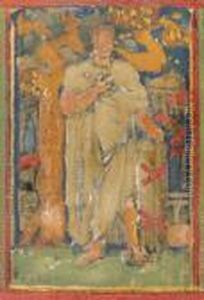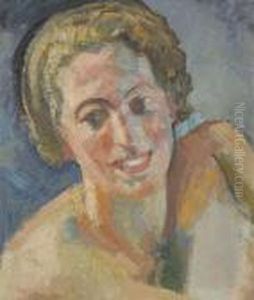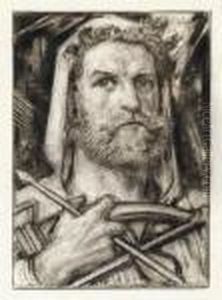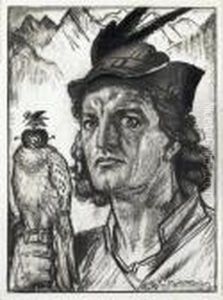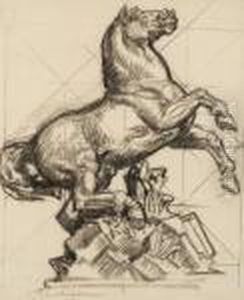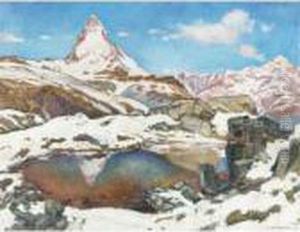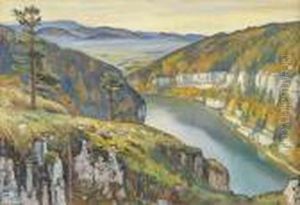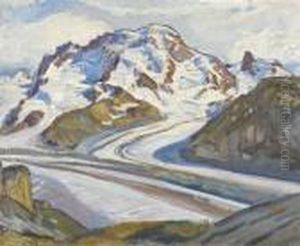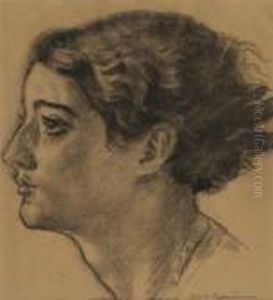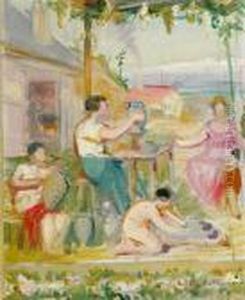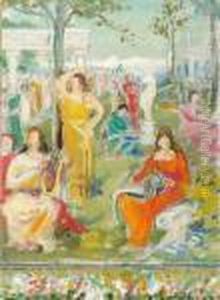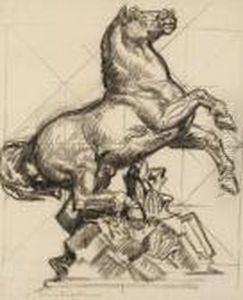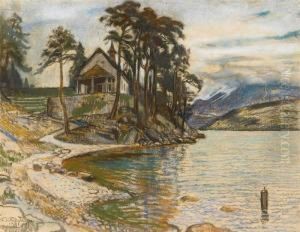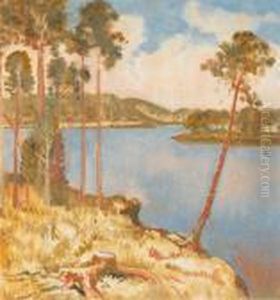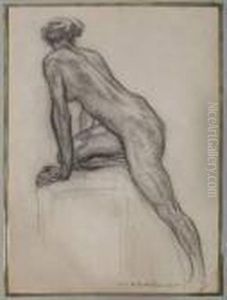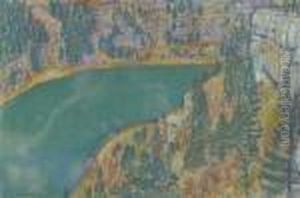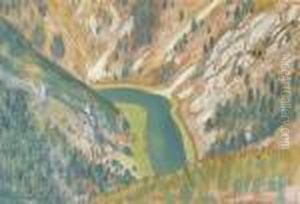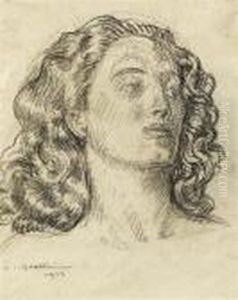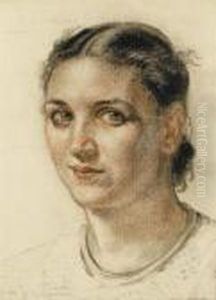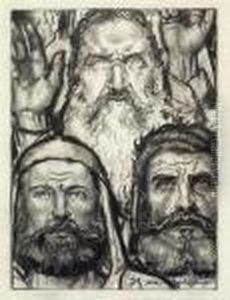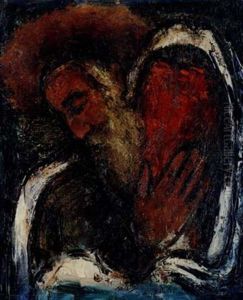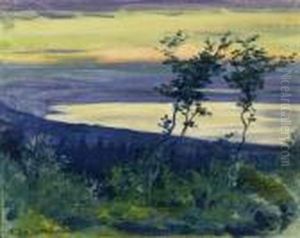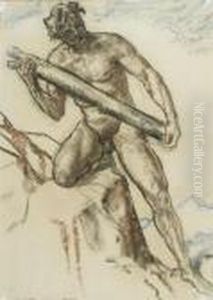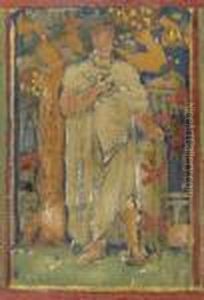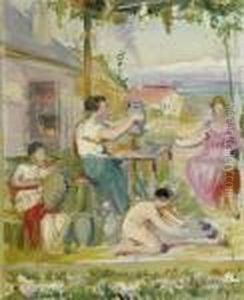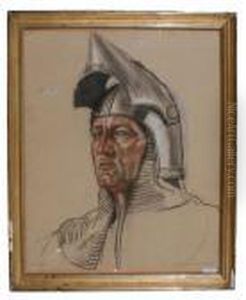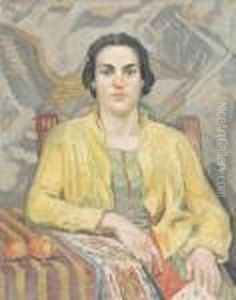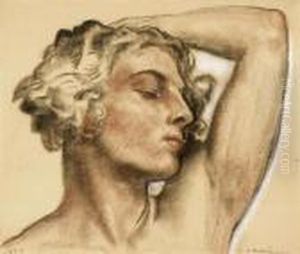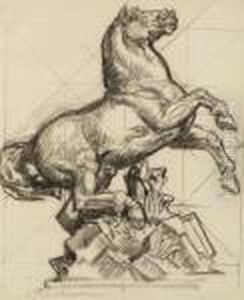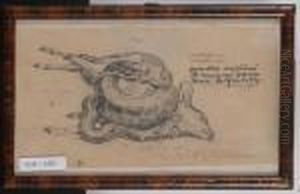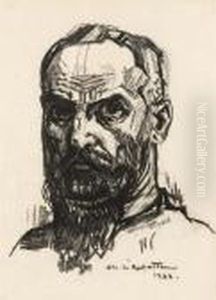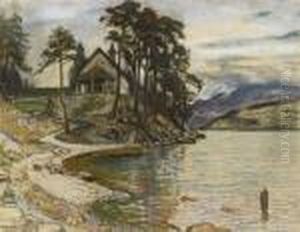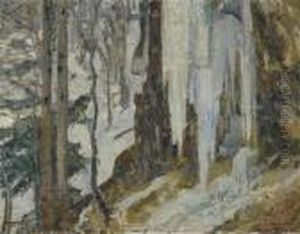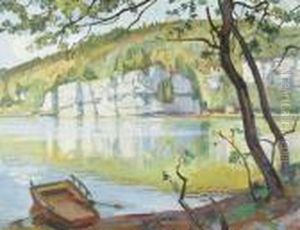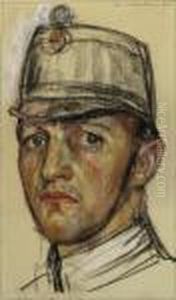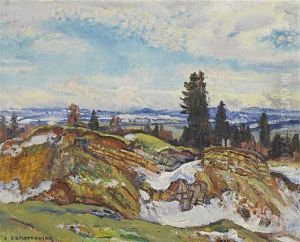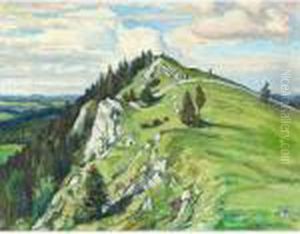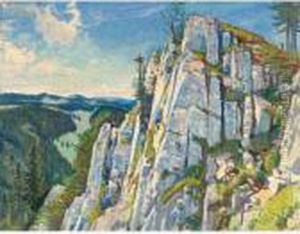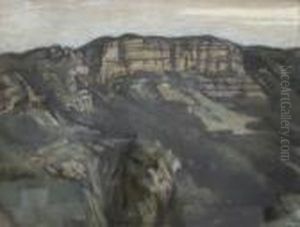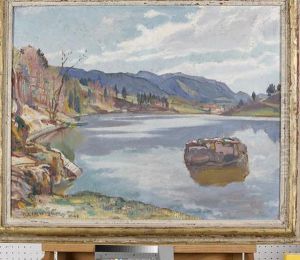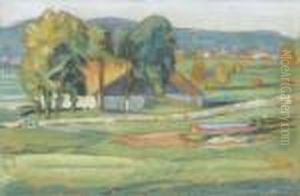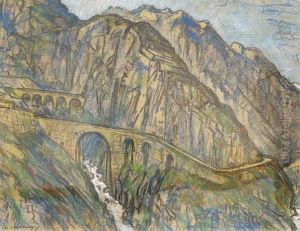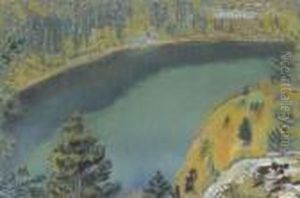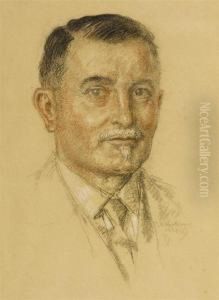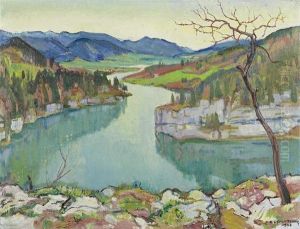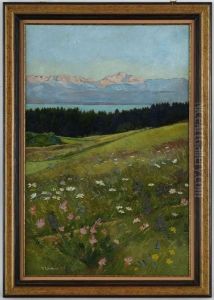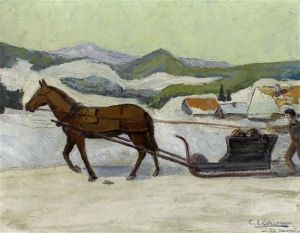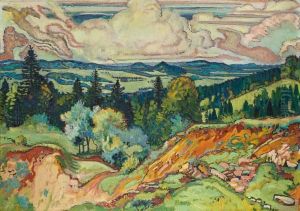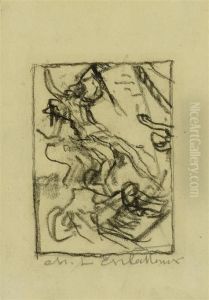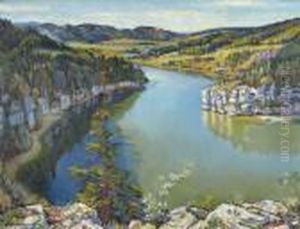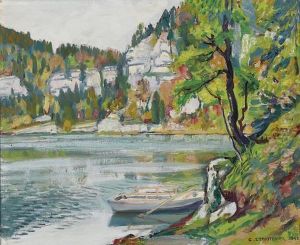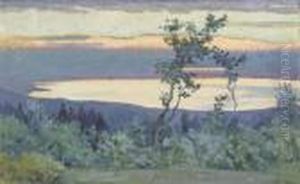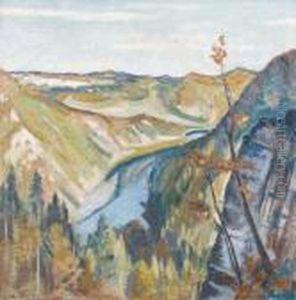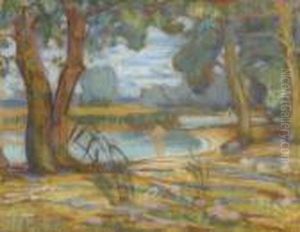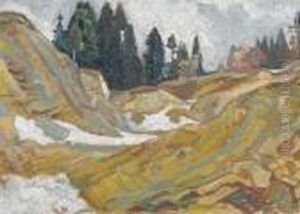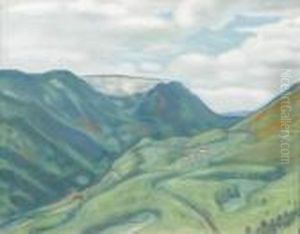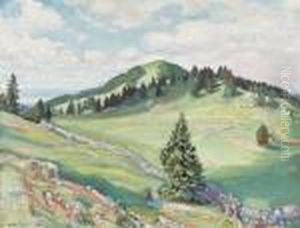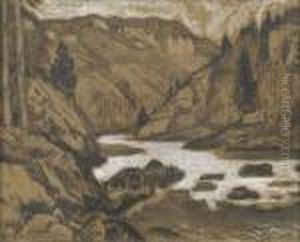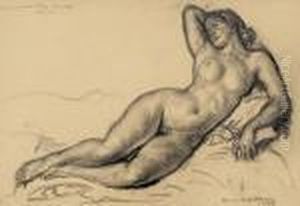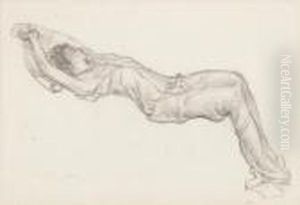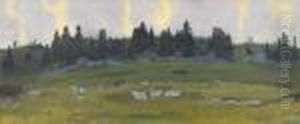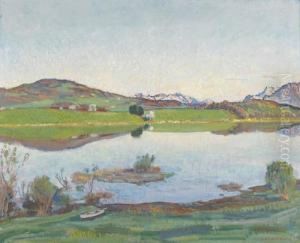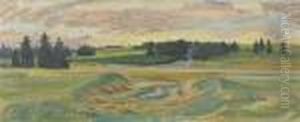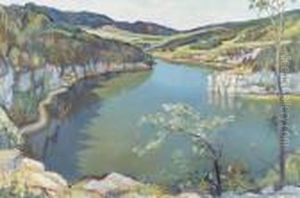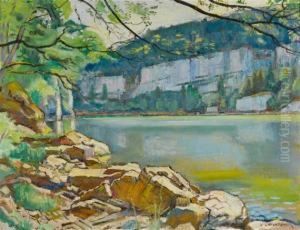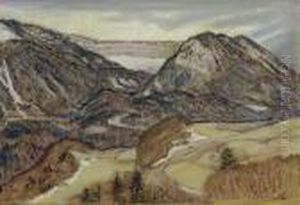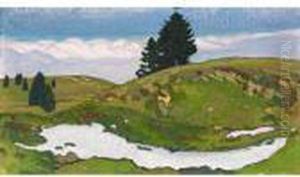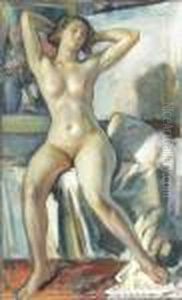Charles L'Eplattenier Paintings
Charles L’Eplattenier was a Swiss painter, architect, and teacher who played a significant role in the development of art and design education in Switzerland. Born on October 6, 1874, in La Chaux-de-Fonds, a region known for its watchmaking industry, L'Eplattenier was immersed in an environment that valued precision and craftsmanship. He studied at the École d'art de La Chaux-de-Fonds and later at the Académie Julian in Paris, which was a popular institution among aspiring artists during that period.
L'Eplattenier's artistic style was heavily influenced by the Art Nouveau movement, which was at its peak during his formative years. His work often featured organic forms, stylized natural motifs, and a harmonious interplay between architecture and decoration. He was a proponent of the 'Style Sapin' (Pine Tree Style), which was a Swiss variant of Art Nouveau that drew inspiration from the local pine tree forests and natural landscapes. This style was characterized by the use of pine tree and other natural motifs in a stylized form that emphasized linear designs and elegant curves.
Aside from his work as an artist and architect, L'Eplattenier was also deeply involved in education. He returned to La Chaux-de-Fonds and became a professor at the École d'art, where he had a profound influence on a generation of Swiss artists and designers. Among his most famous students was Le Corbusier, the renowned architect and urban planner, who was then known as Charles-Édouard Jeanneret. L'Eplattenier encouraged his students to draw inspiration from nature and to develop a form of expression that was both personal and reflective of their Swiss heritage.
Throughout his career, L'Eplattenier undertook various important projects, including the design of buildings and interiors, and he created numerous paintings and decorative arts pieces. His commitment to integrating art and design within the fabric of everyday life was indicative of the broader Arts and Crafts movement, which sought to raise the status of craftsmanship and create beauty in utilitarian objects.
Charles L'Eplattenier passed away on September 15, 1946, in La Chaux-de-Fonds. His legacy continues to be celebrated in Swiss art and design, particularly through his contribution to the education of many notable figures in the field and his development of a distinctly Swiss style of art that resonated with the international Art Nouveau movement.
